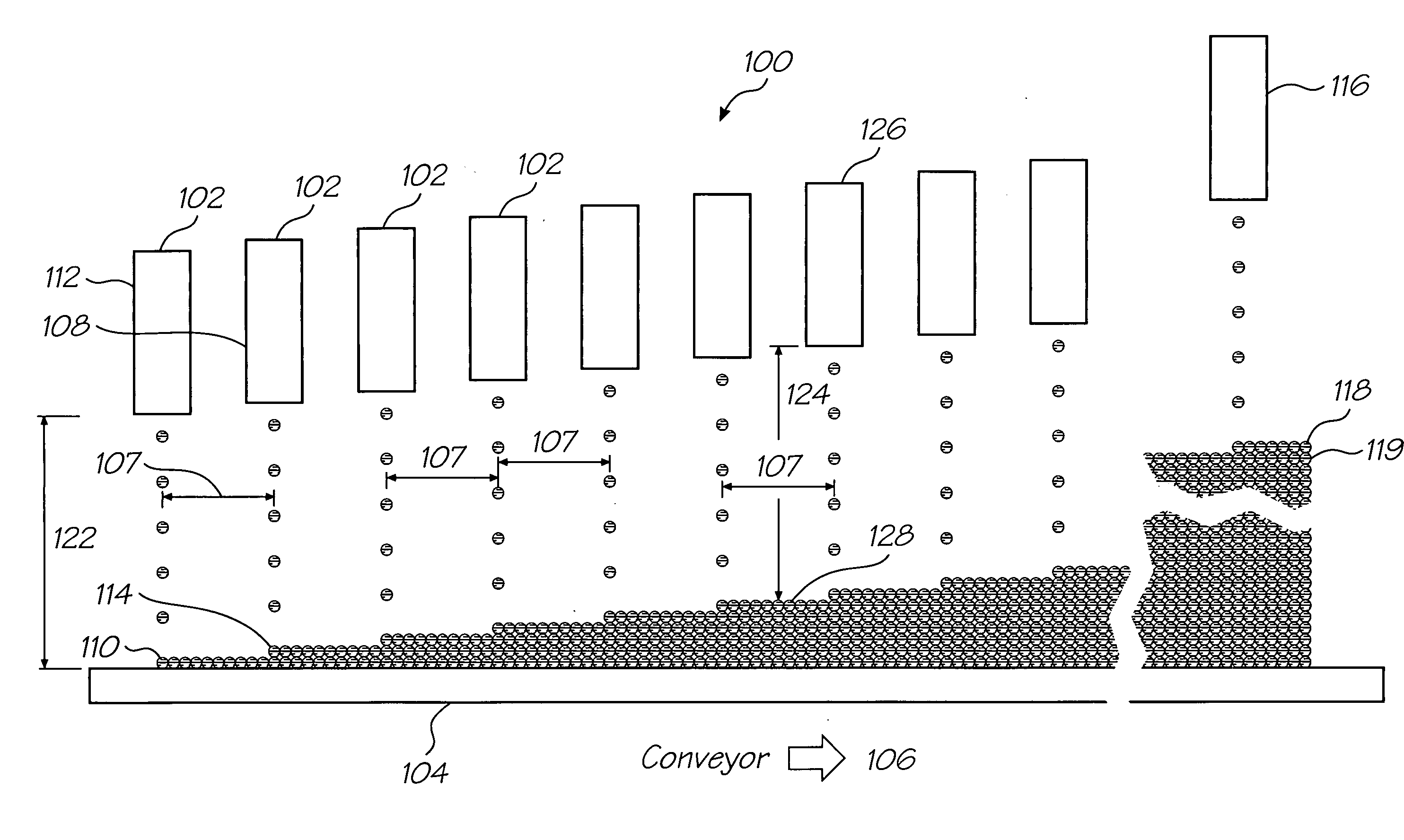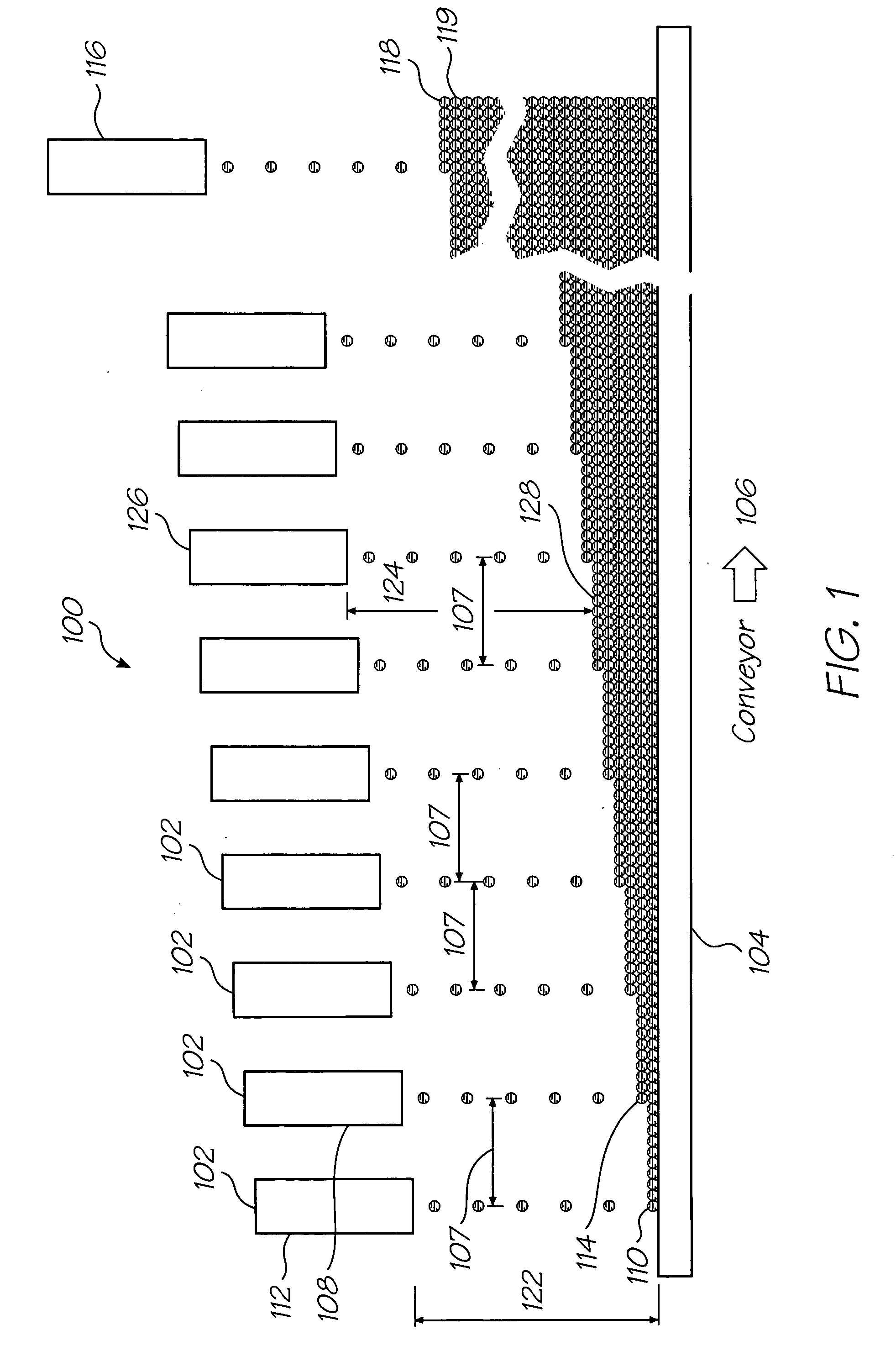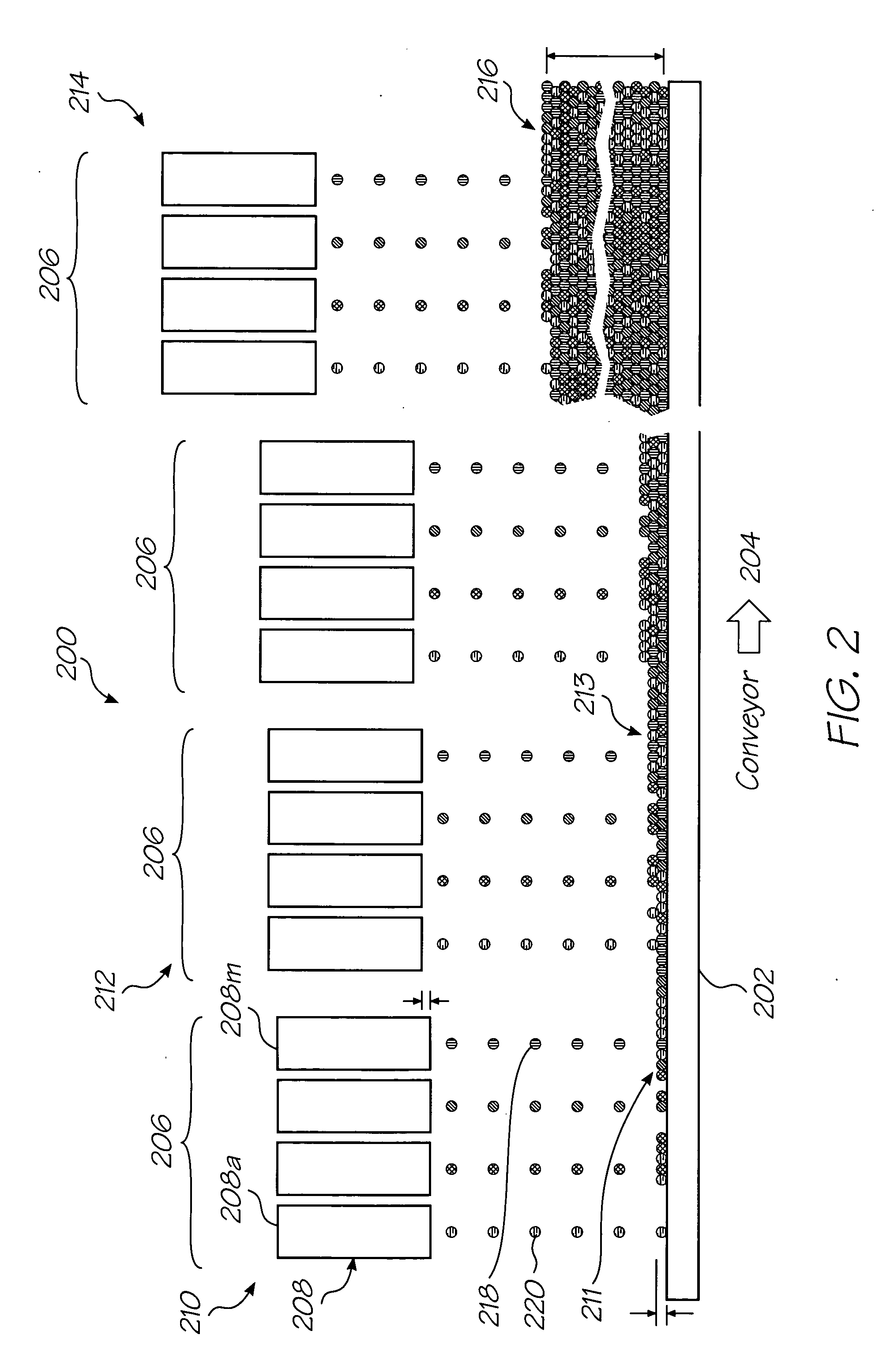Method for creating a 3-d object
a 3-d object and object technology, applied in the field of creating 3d objects, to achieve the effect of increasing the speed of the substrate and increasing the speed
- Summary
- Abstract
- Description
- Claims
- Application Information
AI Technical Summary
Benefits of technology
Problems solved by technology
Method used
Image
Examples
Embodiment Construction
[0150] Basic Concept
[0151] FIG. 1 schematically shows a simplified production line 100 having many substrate width printheads 102. The printheads 102 print materials onto a moving substrate 104, that is preferably moved at a substantially constant speed in a flat plane, as indicated by arrow 106. The printheads 102 extend across the width of the substrate 104 perpendicular to the direction of travel of the substrate and are, preferably, spaced along the substrate 104 with substantially constant separations. However, as will be explained later, constant separation of the printheads is not critical.
[0152] The printheads 102 print one layer of an object onto the previously printed layer. Thus the printhead 112 prints the first layer 110, the second printhead 108 prints a second layer 114 onto the first layer 110 and the N.sup.th printhead 116 prints an N.sup.th layer 118 onto the (n-1).sup.th layer 119. For clarity only one printhead is shown for each layer but in practice there will b...
PUM
| Property | Measurement | Unit |
|---|---|---|
| viscosities | aaaaa | aaaaa |
| width | aaaaa | aaaaa |
| height | aaaaa | aaaaa |
Abstract
Description
Claims
Application Information
 Login to View More
Login to View More - R&D
- Intellectual Property
- Life Sciences
- Materials
- Tech Scout
- Unparalleled Data Quality
- Higher Quality Content
- 60% Fewer Hallucinations
Browse by: Latest US Patents, China's latest patents, Technical Efficacy Thesaurus, Application Domain, Technology Topic, Popular Technical Reports.
© 2025 PatSnap. All rights reserved.Legal|Privacy policy|Modern Slavery Act Transparency Statement|Sitemap|About US| Contact US: help@patsnap.com



